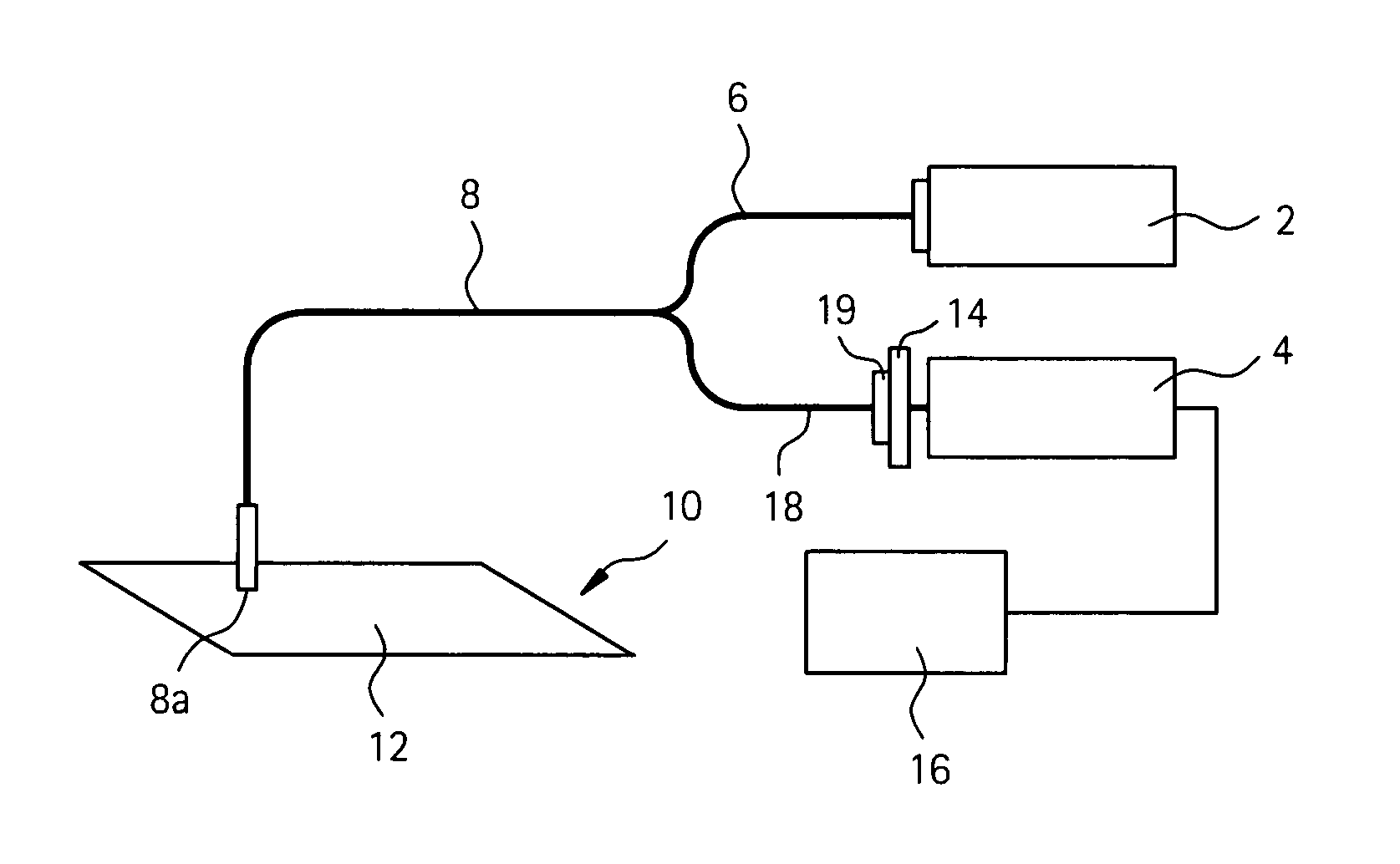Method of authenticating polymers, authenticatable polymers, methods of making authenticatable polymers and authenticatable articles, and articles made there from
a polymer and polymer technology, applied in the field of authenticating polymers, can solve the problems of duplicates and copies that are unusable, unauthorized reproduction or copying of information by unauthorized manufacturers, sellers and/or users, and piracy of data storage media, so as to achieve the effect of preventing duplicates and copies, and preventing duplicates
- Summary
- Abstract
- Description
- Claims
- Application Information
AI Technical Summary
Benefits of technology
Problems solved by technology
Method used
Image
Examples
example 1
[0126]A heat stable organic fluorophore (Lumogen F Red 300, BASF, Germany) was selected for the experiment. This particular fluorophore has a maximum absorption located at about 578 nm, a fluorescence emission located at about 615 nm and a fluorescence yield greater than 90%. In order to incorporate this fluorophore at a tracer level (about 1 ppm in the final article), it was first compounded into polycarbonate to form a masterbatch with a fluorophore content of 0.005 pph (Lumogen F-300 MB). The thermochromic material was selected to be chemically stable in polycarbonate and able to sustain the processing conditions of this engineering polymer. For this example, a regio-random poly(3-octadecylthiophene) was selected (P3ODT lot #YW1202, available from the University of Rhode Island, Kingston, R.I., USA). This thermochromic material is red at room temperature and turns into a red-shade yellow above the thermochromic transition. Although this material is said to exhibit a thermochromic...
example 2
[0131]FIG. 2 depicts the differences between fluorescence spectra of polymeric articles prepared in Example 1 and measured when the articles were at room temperature (cold) and at 100° C. (hot) as per the experimental set up of FIG. 1. FIG. 2 shows the fluorescence emission profile of samples MWB0703031-2 to -5 at an excitation wavelength of 532 nm at room temperature (cold) and when heated at about 100° C. (hot). Sample MWB0703031-2, which contains only the thermochromic tag (0.05 pph of P3ODT), shows a significant change in its fluorescence spectrum when the sample temperature is raised to about 100° C. The fluorescence emission is not only increased but the peak location shifts from about 650 nm to about 590 nm. Sample MWB0703031-3, which contains only an organic fluorophore (1 ppm of BASF Lumogen F-300) shows no change in its fluorescence emission characteristics between “cold” and “hot” state. In comparison, when the same organic fluorophone is added as an amplification compoun...
example 3
[0132]FIG. 3 demonstrates the reversibility of the fluorescence intensity increase upon heating of material MWB0707031-4 as prepared in Example 1. Sample MWB0703031-4 was exposed to consecutive short heat pulses from a heat gun while dynamic fluorescence measurements were taken.
[0133]This example illustrates that the disclosed methods provide a more robust identification method that can be performed many times. This feature is of particular interest in anti-piracy where articles could be checked at various stages during production, shipping, and distribution or even in court to prove or disprove the authenticity of a product.
PUM
| Property | Measurement | Unit |
|---|---|---|
| excitation wavelength | aaaaa | aaaaa |
| wavelength | aaaaa | aaaaa |
| excitation wavelength | aaaaa | aaaaa |
Abstract
Description
Claims
Application Information
 Login to View More
Login to View More - R&D
- Intellectual Property
- Life Sciences
- Materials
- Tech Scout
- Unparalleled Data Quality
- Higher Quality Content
- 60% Fewer Hallucinations
Browse by: Latest US Patents, China's latest patents, Technical Efficacy Thesaurus, Application Domain, Technology Topic, Popular Technical Reports.
© 2025 PatSnap. All rights reserved.Legal|Privacy policy|Modern Slavery Act Transparency Statement|Sitemap|About US| Contact US: help@patsnap.com



